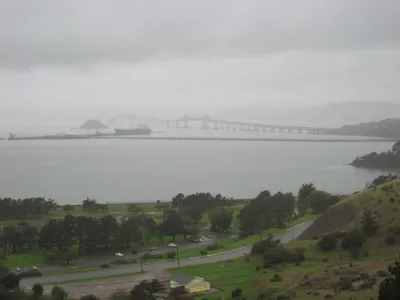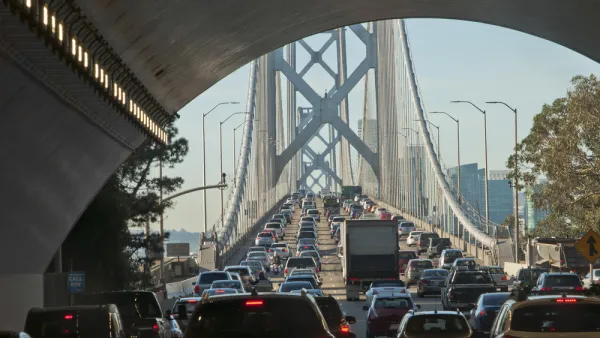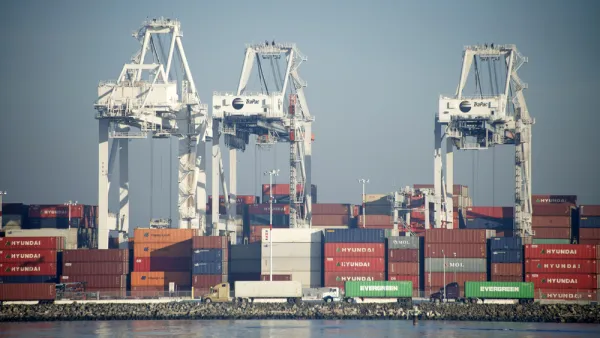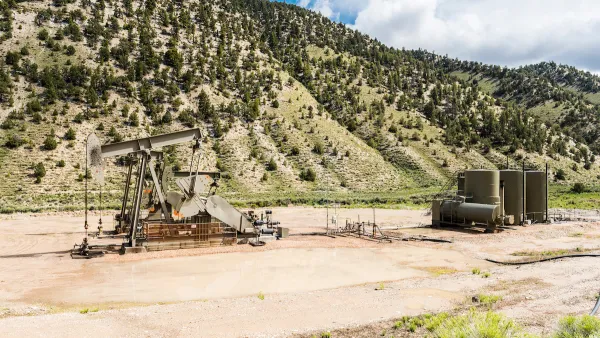Can freight trains and a scenic shoreline park along San Francisco Bay coexist, or are they incompatible uses? The East Bay Regional Park District voted to remove old rail tracks that BNSF Railway wants to reactivate. A local court may decide.

Cabanatuan provides the historical context of the rail line and the city of Richmond.
BNSF Railway’s predecessor, the Atchison, Topeka and Santa Fe Railway, brought Richmond to life in 1900 when it located its western terminus there. The railroad built a large rail yard near what became Point Richmond and a tunnel and tracks to Ferry Point on the shoreline, where passenger trains rolled onto barges to San Francisco and freight trains were taken to other bay ports.
When the park district bought the right of way in 1991 via eminent domain, the railroad was granted an easement to run trains to two industrial sites, both of which are now defunct.
What's not mentioned in any local or regional media coverage of the controversy is the vital role that rail plays in goods movement, not just from an economic but also an air quality perspective as well, even when the trains are being pulled by diesel-powered locomotives.
"[O]ne rail car can haul as much as four tractor-trailer trucks," according to a recent New York Times article (posted here) about a $100 million effort led by the New York City Economic Development Corporation to invest in local freight rail infrastructure so as to reduce truck traffic and emissions.
FULL STORY: Train tussle: Campaign fights plan for ‘wall of railcars’ on Richmond shoreline

National Parks Layoffs Will Cause Communities to Lose Billions
Thousands of essential park workers were laid off this week, just before the busy spring break season.

Retro-silient?: America’s First “Eco-burb,” The Woodlands Turns 50
A master-planned community north of Houston offers lessons on green infrastructure and resilient design, but falls short of its founder’s lofty affordability and walkability goals.

Delivering for America Plan Will Downgrade Mail Service in at Least 49.5 Percent of Zip Codes
Republican and Democrat lawmakers criticize the plan for its disproportionate negative impact on rural communities.

Test News Post 1
This is a summary

Test News Headline 46
Test for the image on the front page.

Balancing Bombs and Butterflies: How the National Guard Protects a Rare Species
The National Guard at Fort Indiantown Gap uses GIS technology and land management strategies to balance military training with conservation efforts, ensuring the survival of the rare eastern regal fritillary butterfly.
Urban Design for Planners 1: Software Tools
This six-course series explores essential urban design concepts using open source software and equips planners with the tools they need to participate fully in the urban design process.
Planning for Universal Design
Learn the tools for implementing Universal Design in planning regulations.
EMC Planning Group, Inc.
Planetizen
Planetizen
Mpact (formerly Rail~Volution)
Great Falls Development Authority, Inc.
HUDs Office of Policy Development and Research
NYU Wagner Graduate School of Public Service





























